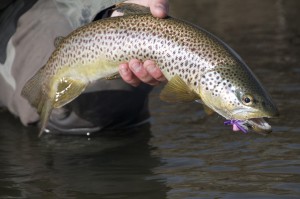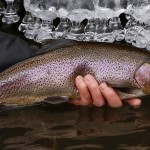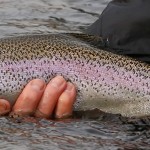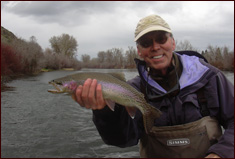www.matchthehatch.com • AROUND THE NORTHWEST, 2020
EPA Study Says British Columbia Coal Mines Polluting Kootenai River, 2020 By Michael Hamilton
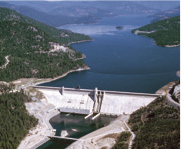
Libby Dam, Montana
photo: USGS
A new study has detected elevated levels of contamination in fish and fish eggs in the Kootenai River that flows out of Libby Dam into Montana and Idaho. Water quality sampling determined that “the Kootenai River is being impacted by upstream mining in British Columbia.” The study was a joint effort by the U.S. Geological Survey, U.S. Environmental Protection Agency (EPA), Kootenai Tribe of Idaho, and wildlife agencies in Montana and Idaho.
“The findings are concerning. It’s not what we expected,” states EPA hydrologist Jason Gildea. Of the 142 fish evaluated, Gildea notes that a portion tested positive for selenium levels exceeding EPA criteria.
The EPA’s study is based on water chemistry and fish tissue samples taken from a target population below Libby Dam to the Canadian border. “These data indicate upstream activities may be affecting water quality and aquatic resources in Montana and Idaho,” says EPA regional administrator Gregory Sopkin. He adds, “The results, particularly selenium impacts to fish, underscore the need for a more detailed understanding of water quality and continued collaboration to protect Lake Koocanusa and the Kootenai River.”
The EPA report notes that contaminants were not detected in water samples from Kootenai River tributaries unaffected by discharge from Lake Koocanusa. According to Gildea, this indicates “the source is the discharge from mine-related constituents at the lake.” Additionally, scientists found levels of nitrate nearly three times higher than samples from the early 2000s. Contaminants entering Lake Koocanusa from B.C.’s Kootenai and Elk Rivers have been increasing for decades. Alarmingly high concentrations of selenium have been leeching into the Elk River Valley watershed from five open-pit metallurgical coal mines operated by Teck Resources, a Canadian mining company.
Selenium is a naturally occurring element present in sedimentary rocks, shales, coal, and phosphate deposits and soils. According to the EPA, “Selenium bioaccumulates in the aquatic food chain and chronic exposure in fish and aquatic invertebrates can cause reproductive impairments.”
Since 2014, key stakeholders from the U.S. and Canada have struggled to adopt transboundary policies to control the flow of these toxic contaminants. As a result, says Erin Sexton, a research scientist at the University of Montana, Flathead Lake Biological Station, Lake Koocanusa has become a settling pond for selenium pollution. “The lake is the most sensitive point in
the watershed because it captures and keeps the contamination flowing downstream from Teck’s open-pit coal mines. We have one of the biggest selenium contamination issues in the world taking place in the Elk River watershed and downstream into Lake Koocanusa.”
High levels of selenium poisoning, adds Sexton, can kill fish and affect reproductive cycles by accumulating in their eggs. In B.C.’s Elk River, for example, fly-fishing guides have documented craniofacial and spinal deformities in westslope cutthroat, a proven result of exposure to high levels of selenium. Concern over selenium pollution from Canadian coal mines is not new. United States officials, including senators from Montana, Idaho, Washington, and Alaska, have demanded that the B.C. government step up its efforts to prevent mining waste from poisoning American watersheds.
In 2016, the EPA issued revised national criteria recommendations for selenium in water and fish. The Montana Department of Environmental Quality is currently working with the British Columbia Ministry of Environment and Climate Change Strategies and other parties to develop site-specific water quality criteria for selenium in Lake Koocanusa. If adopted, in 2020, these criteria could inform protective levels of selenium on both sides of the border. Meanwhile, three new open-pit coal mines are being proposed in the Elk River Valley in addition to the existing five.



